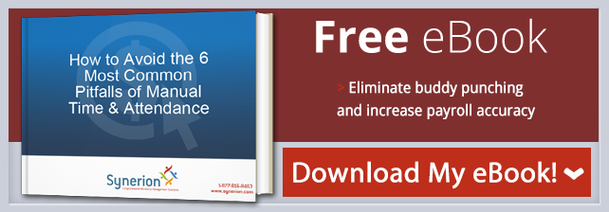 Payroll is one of the biggest costs in both large and small businesses and waste can significantly add to this cost. Wasted time, wasted hours and wasted talents can drive a business into the red, and often, that waste begins during the scheduling process. These four scenarios represent a few of the ways scheduling mistakes cost your business serious money every day.
Payroll is one of the biggest costs in both large and small businesses and waste can significantly add to this cost. Wasted time, wasted hours and wasted talents can drive a business into the red, and often, that waste begins during the scheduling process. These four scenarios represent a few of the ways scheduling mistakes cost your business serious money every day.
Inadequate Coverage
Just like the inevitability of death and taxes, every year employees will take sick days, go on vacation, and need to get off early for doctor's appointments. If you don't have the necessary coverage for these inevitabilities, you've found your first scheduling mistake.
Every business needs a robust pool of part-time and as-needed employees that can step in when full-time employees are scheduled to be off or suddenly call out. While adding people to the payroll rarely counts as a cost-saving tool, having these employees not only eases employee frustrations about working short-staffed, but also prevents overtime pay. Inadequate coverage for normal time off not only costs businesses money, but also harms employee morale.
Knee-jerk Scheduling
Anyone who works on the schedule has experienced the gut wrenching sensation of walking into a shift and finding only a small percentage of the people needed to run the shift are at their posts. When schedules are done on spreadsheets or paper, it's easy to accidentally give too many employees the day off and, in response, call in everyone under the sun for coverage, leading to overtime and lost business through customer frustration.
One simple way to eliminate knee-jerk scheduling is to use an automated time keeping system that prevents multiple employees from taking the same day off or leaving gaps in the schedule. By having a core number of employees needed to run a shift, scheduling software can alert managers to when that number is exceeded. Knee-jerk scheduling not only annoys employees, but it can have a huge impact on your business costs.
Abusive Overtime
Reducing or eliminating overtime pay is one easy way employers can save money and reduce employee burnout. While there will always be some out of the ordinary situation where overtime is required, it shouldn't be the norm. Enacting strict policies that reduce overtime is imperative for employers looking to reduce business costs.
Talk to employees about how to prevent overtime. Ask whether they require additional part-time staff or modified work schedules to get a better picture of why overtime occurs and how justified that overtime is. Overtime is one of the key reasons business payroll costs can spiral out of control. Nip your overtime problems in the bud to save money fast.
Rumor Mill Increases
If you're still scheduling extra employees based on what you think productivity was like last summer or what you heard from your local city council member, it's time to look at what those rumors are actually costing your business. While there are some times where there are legitimate reasons for increasing personnel, those instances should be backed up by hard data. Before rushing to schedule two more people at the registers or have three more customer service reps on the phones, assess your historical productivity and need to determine whether those increases are justified or just costly mistakes.
While the "perfect" schedule varies from company to company, there are some key situations that cost money in every industry. These four situations are just a handful, but offer a concrete place to start looking when trying to reduce payroll costs. Start reducing the amount spent on your scheduling mistakes today.
